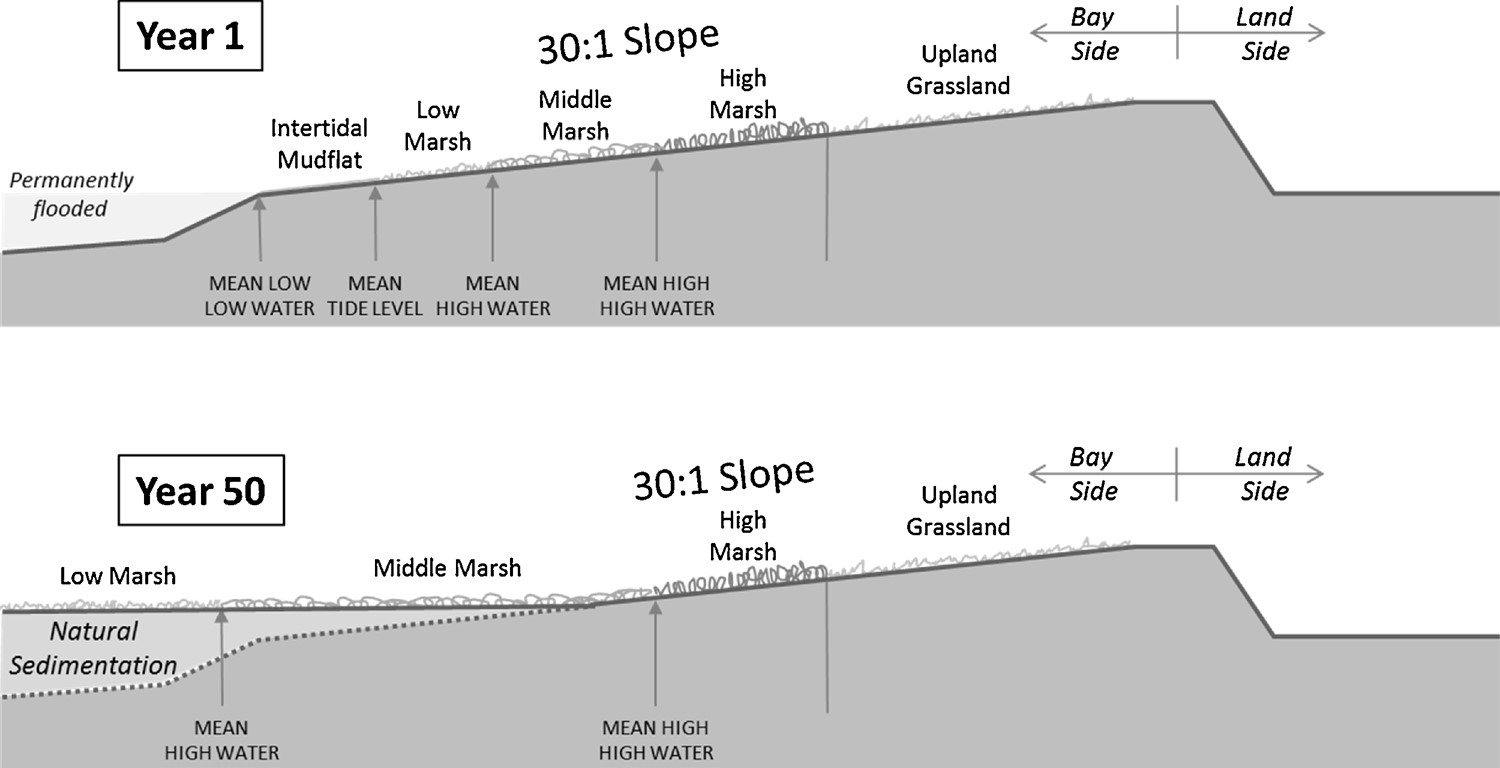This recently published study by Pedro J. Pinto, Matt Kondolf, and Raymond Wong (Environmental Science and Policy 90: 28-37) explores examples where actual implementation of SLR adaptation has led, or may lead to, the need to revise standards and practices or require uneasy choices between conflicting public interests. While there is broad agreement in principle in the San Francisco Bay region on the need to adapt to sea-level rise through innovative approaches, actual implementation has proven difficult because of institutional complexity and communication challenges among stakeholders, including conflicting agency mandates and priorities. Removing institutional barriers to adaptation will almost certainly require some agencies to adapt their policies, but path dependence is an obstacle. The article is available for free download until 18 November here.
A related paper explores why the SF Bay is so highly vulnerable to sea-level rise by comparison to the Tagus Estuary, Lisbon, Portugal, which is physiographically similar but was subject to a very different development history. A key difference was the role of the US Swamp Act of 1850, which turned tidal lands over from the federal government to states so the latter could encourage drainage and development, leading ultimately to a vast area of urban settlement subject to inundation in coming decades. By contrast, in Portugal such tidal lands remained in the control of the crown, and were managed mostly for low-intensity agriculture, so today these lands are available to accommodate the landward migration of tidal wetlands with sea level rise, without conflicting with most urban land uses. The paper,
“Evolution of two urbanized estuaries: environmental change, legal framework, and implications for sea-level rise vulnerability” (Water 8:535) is available online (open access) at http://www.mdpi.com/2073-4441/8/11/535/pdf

‘Horizontal levee’ with migrating ecotone. (adapted from HDR 2015)